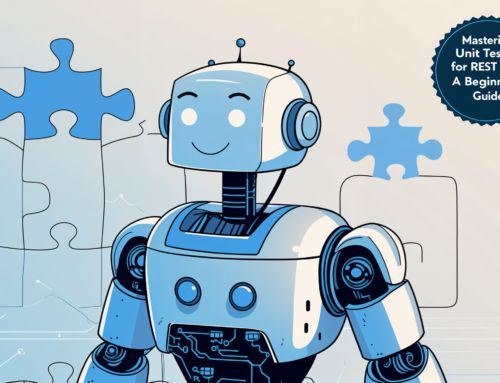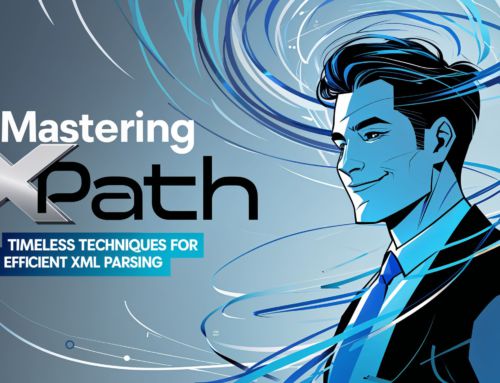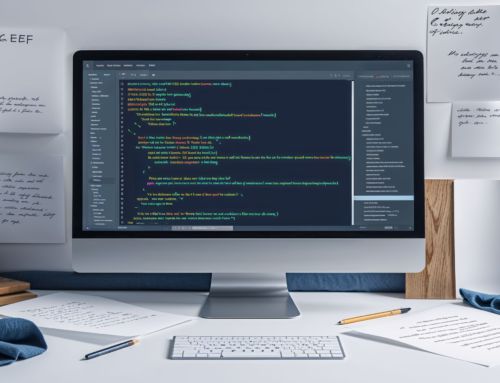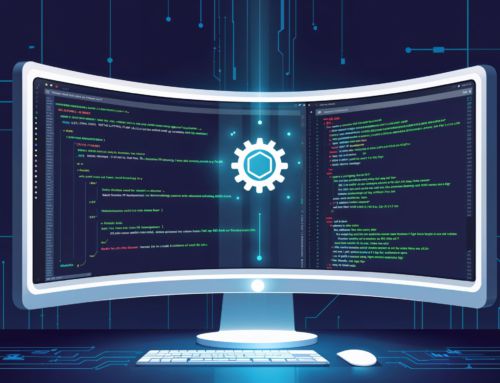Discovering the Magic of Pair Programming: A Guide for Modern Developers
Have you ever wondered how two minds working together can produce cleaner, more efficient code? Welcome to the world of pair programming—a collaborative technique where two developers team up at one workstation to tackle coding challenges. In this blog post, we’ll dive into what pair programming is, explore its benefits and challenges, and share some practical tips to help you make the most of this engaging development style.
What Is Pair Programming?
Pair programming is a software development technique that involves two programmers working together on the same code. Instead of coding in isolation, developers collaborate in real time to solve problems, write code, and review each other’s work. This practice is popular in agile development environments and is known for improving code quality, spreading knowledge, and fostering creativity.
How Does It Work?
In a typical pair programming setup, there are two key roles:
- Driver: The developer who actively writes the code, focusing on the implementation of the task at hand.
- Navigator: The developer who reviews each line of code, offers suggestions, and thinks about the overall strategy, potential pitfalls, and improvements.
The roles are not fixed. Developers often swap roles periodically, ensuring both partners get to contribute to both the coding and reviewing aspects. This dynamic interaction helps maintain high standards and nurtures a shared understanding of the project.
The Benefits of Pair Programming
While some may initially be skeptical about the idea of coding side-by-side, the benefits of pair programming are hard to ignore. Here are some compelling reasons to give it a try:
Enhanced Code Quality
When two developers review code together, it’s like having a built-in code audit. The constant exchange of ideas means that potential bugs and logical errors are spotted early. This leads to:
- Fewer bugs: Immediate review helps catch mistakes before they become serious issues.
- Cleaner code: Two sets of eyes ensure that the code is well-structured and follows best practices.
Increased Knowledge Sharing
Pair programming is not just about writing code—it’s also about learning. Whether you’re a seasoned developer or just starting, pairing with someone allows you to:
- Learn new techniques: Discover different coding styles and approaches.
- Share domain knowledge: Discuss best practices, industry trends, and new tools.
This knowledge transfer can significantly boost team expertise, making the entire group more adaptable and resourceful.
Better Problem-Solving and Creativity
Two heads are better than one, especially when it comes to tackling complex problems. Pair programming encourages brainstorming and innovative thinking. Here’s how it works:
- Brainstorming solutions: Two perspectives often lead to a creative approach that neither developer might have considered alone.
- Faster problem-solving: The combined expertise often results in a quicker resolution of issues.
Boosted Team Morale and Communication
Working closely with a colleague can foster a stronger sense of community and trust within a team. It creates an environment where everyone feels supported, and ideas flow more freely. Regular pair programming sessions can help:
- Improve communication: Enhance clarity and reduce misunderstandings in code and project goals.
- Build relationships: Strengthen bonds and make the workplace more enjoyable.
Different Approaches to Pair Programming
Pair programming isn’t a one-size-fits-all approach. Depending on the project and team dynamics, different styles can be applied. Let’s take a look at some popular methods:
Driver-Navigator Model
This is the classic model where one developer (the driver) writes the code and the other (the navigator) provides direction. This method is highly effective in ensuring that code is constantly reviewed and optimized.
Remote Pair Programming
In today’s digital age, remote work is more common than ever. Remote pair programming uses screen sharing, collaborative coding tools, and communication apps to bring developers together even when they’re not in the same room. This approach allows teams spread across different locations to:
- Stay connected: Maintain a sense of teamwork despite geographical distances.
- Share expertise: Collaborate with peers from different parts of the world, bringing diverse insights into the project.
Ping-Pong Pairing
This method takes turns writing tests and code. One developer writes a test, and the other writes the corresponding code to pass the test. Once the test passes, they switch roles. Ping-pong pairing not only reinforces best practices in test-driven development but also ensures that both developers are constantly engaged in problem-solving.
Tips for Successful Pair Programming
While the benefits of pair programming are numerous, making it work smoothly requires thoughtful planning and good communication. Here are some tips to help you get started:
- Set clear expectations: Agree on the roles and goals for each session to ensure both parties are on the same page.
- Take regular breaks: Avoid burnout by scheduling short breaks to refresh your mind.
- Use the right tools: Leverage collaborative platforms and screen-sharing tools that make remote pairing as seamless as possible.
- Swap roles frequently: Rotate the driver and navigator roles to keep the session dynamic and engaging.
- Embrace feedback: Constructive criticism is key. Be open to suggestions and focus on continuous improvement.
Remember, every team is different. It might take a few sessions to find the right rhythm that works for you and your partner. Don’t be discouraged by initial hiccups—learning from each session is part of the process.
Overcoming Common Challenges
No approach is without its challenges. Here are some common obstacles in pair programming and strategies to overcome them:
Personality Clashes
Not every pairing will result in instant chemistry. Differences in working styles or personality can sometimes lead to friction. Here’s what you can do:
- Communicate openly: Discuss your preferences and work styles early on.
- Practice empathy: Understand that each person brings unique strengths and challenges to the table.
Different Skill Levels
Sometimes, one developer might be more experienced than the other. Instead of letting this create an imbalance, use it as an opportunity for mentorship. The more experienced developer can:
- Guide and support: Share knowledge and help the junior partner learn through practical examples.
- Ask for fresh perspectives: Even less experienced developers can offer innovative ideas that challenge the status quo.
Distractions and Focus Issues
When two people share a single workstation or screen, distractions can creep in. To maintain focus:
- Create a quiet space: Minimize interruptions by finding a dedicated space for pair programming sessions.
- Set time blocks: Use time management techniques like the Pomodoro Technique to keep sessions productive and focused.
Personal Reflections on Pair Programming
As someone who has experienced the ups and downs of coding alone and with a partner, I can attest that pair programming brings a refreshing change to the daily grind. I remember a project where deadlines were tight and pressure was high. Pair programming not only helped us catch errors early but also made the process enjoyable. The constant back-and-forth dialogue led to innovative solutions and fostered a sense of camaraderie that lasted long after the project was completed.
Have you ever tried pair programming? What was your experience like? Many developers find that the benefits extend far beyond the code, impacting team spirit and personal growth. It’s not just about writing better code—it’s about building stronger, more resilient teams.
Integrating Pair Programming into Your Workflow
If you’re intrigued by the potential of pair programming, here are some steps to help you get started:
- Start small: Begin with short pairing sessions to ease into the process.
- Invest in training: Workshops or short courses on agile practices and pair programming can be invaluable.
- Choose the right projects: Not every task needs two developers. Identify projects where collaboration can lead to significant improvements.
- Review and reflect: After each session, discuss what worked well and what could be improved. Continuous feedback is key to growth.
This gradual integration can make the transition smoother for teams that are used to working independently. By taking small, manageable steps, you’ll soon see the benefits of a collaborative environment, where every coding session becomes an opportunity to learn and grow.
Conclusion
Pair programming is more than just a method of writing code—it’s a powerful tool for fostering collaboration, improving code quality, and driving innovation. Whether you’re a solo coder looking to broaden your horizons or part of a larger team striving for excellence, embracing pair programming can transform the way you approach software development.
By working together, sharing knowledge, and embracing the challenges along the way, developers can not only produce better code but also build lasting professional relationships. So, the next time you face a tricky bug or a complex feature, consider reaching out to a colleague for a pair programming session. You might be surprised at how much easier—and even more enjoyable—the task becomes.
Have you given pair programming a try? What tips or experiences can you share from your own journey? Feel free to drop your thoughts in the comments below. Happy coding!












Leave A Comment